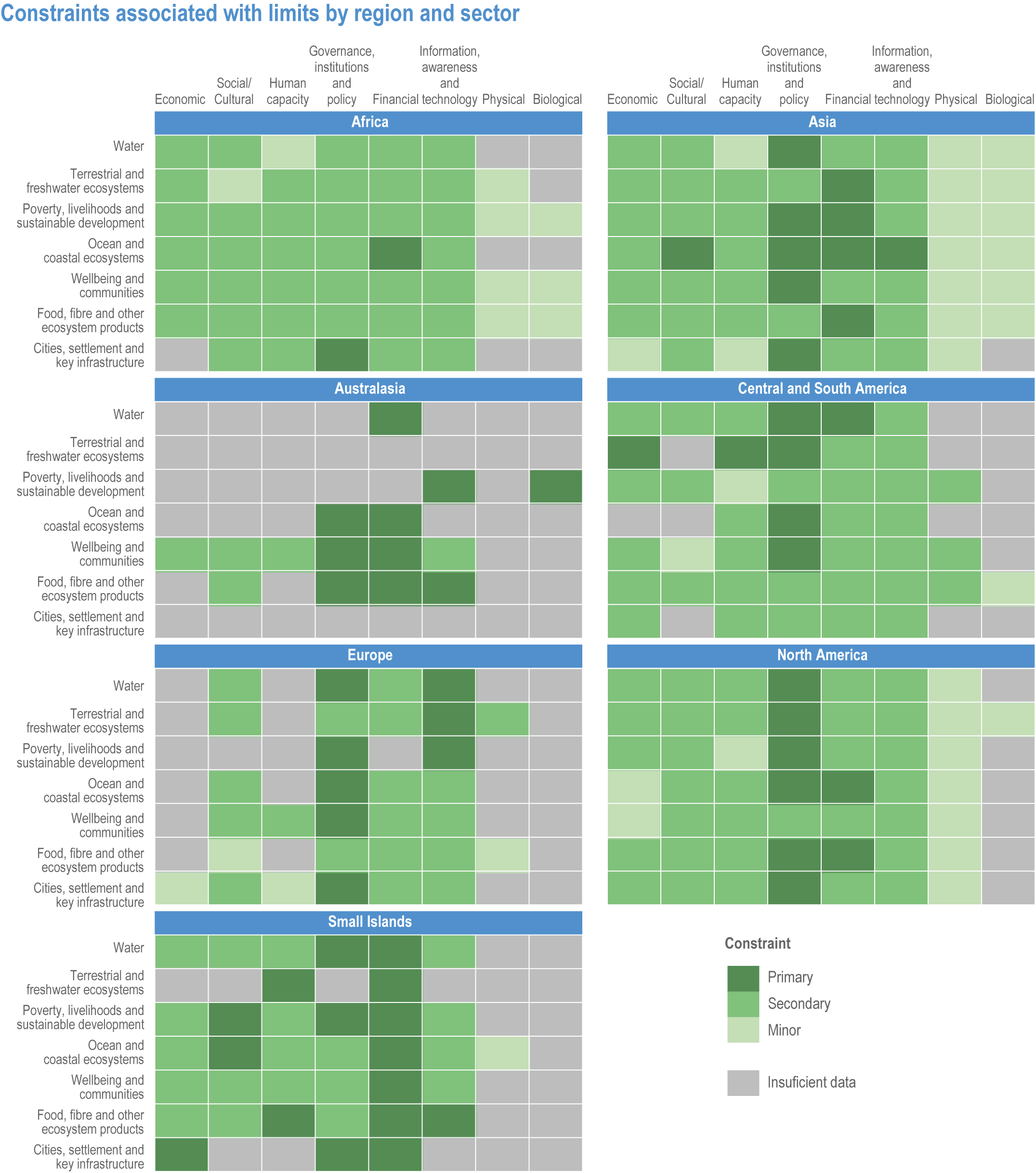Figure 16.8
Figure caption
Figure 16.8 | Constraints associated with limits by region and sector. Data from Thomas et al. (2021), based on 1682 scientific publications reporting on adaptation-related responses in human systems. See SM16.1 for methods. Constraints are categorised as: (1) economic: existing livelihoods, economic structures, and economic mobility; (2) social/cultural: social norms, identity, place attachment, beliefs, worldviews, values, awareness, education, social justice, and social support; (3) human capacity: individual, organisational, and societal capabilities to set and achieve adaptation objectives over time including training, education, and skill development; (4) governance, institutions and policy: existing laws, regulations, procedural requirements, governance scope, effectiveness, institutional arrangements, adaptive capacity, and absorption capacity; (5) financial: lack of financial resources; (6) information/awareness/technology: lack of awareness or access to information or technology; (7) physical: presence of physical barriers; and (8) biologic/climatic: temperature, precipitation, salinity, acidity, and intensity and frequency of extreme events including storms, drought, and wind. Insufficient data: there is not enough literature to support an assessment (fewer than five studies available); Minor constraint: <20% of assessed literature identifies this constraint; Secondary constraint: 20–50% of assessed literature identifies this constraint; Primary constraint: >50% of assessed literature identifies this constraint.
